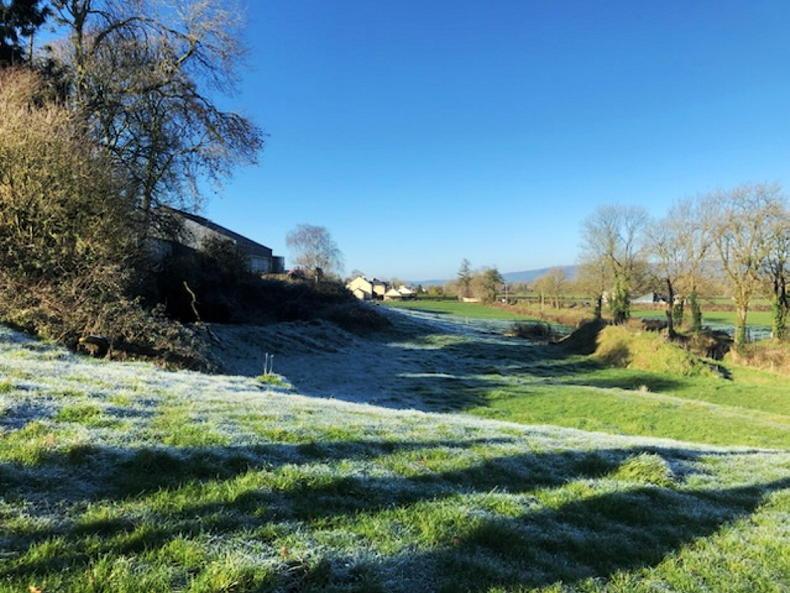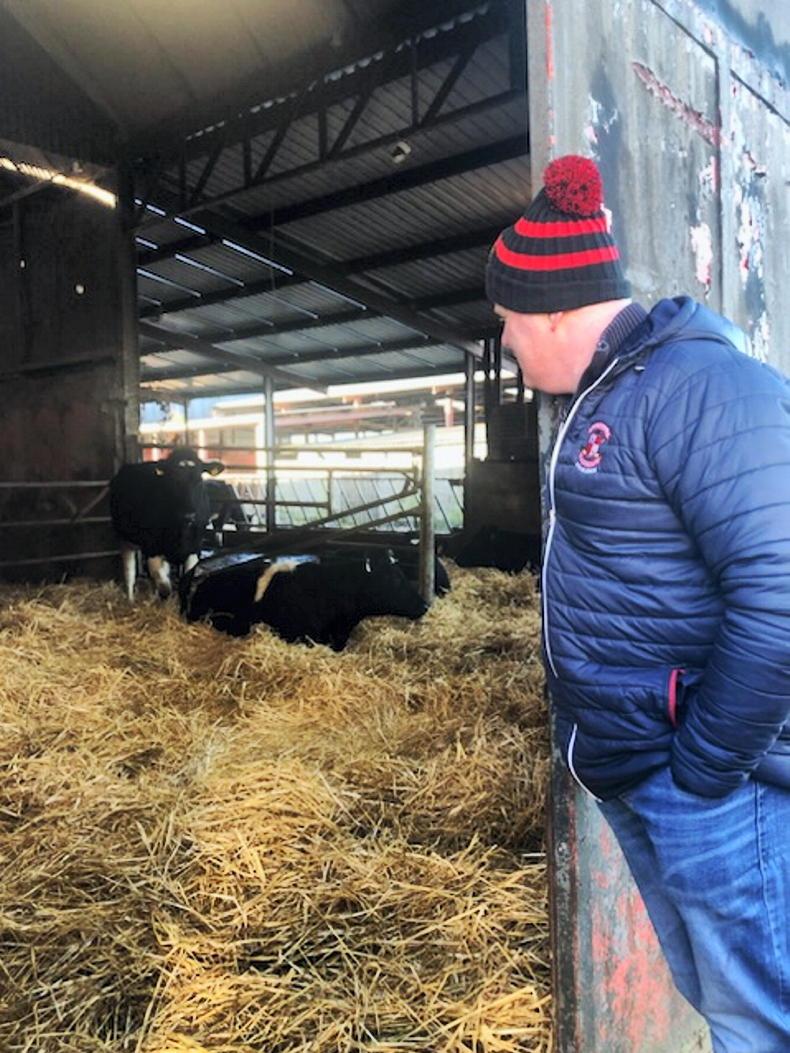When ammonia is lost to the atmosphere, farmers lose valuable nutrients. Ammonia emissions are also an air and water pollutant, with the potential to harm wildlife, human health and the wider environment.
We’re fortunate in Ireland in that grazing systems have been shown to have naturally reduced levels of ammonia emissions in comparison to housed livestock systems.
However, with new techniques readily available to further reduce ammonia losses, it makes economic and environmental sense to do so.
Existing measures
Luckily, measures to reduce ammonia emissions are relatively simple and a win-win for the farmer and the environment.
For example, using low emissions slurry spreading techniques (LESS) can reduce ammonia losses by 50%. Likewise, switching to protected urea can reduce emissions by over 70%.
Implementing both of these measures results in decreased application rates, increased availability of nutrients for crop uptake and a reduction in pollutants released into the wider environment.
Decreased application rates also balance out the higher initial costs of purchasing protected urea, meaning it makes sense to make the switch economically as well as environmentally.
Natural solutions
Nonetheless, as Martin Crowe explained at our recent Footprint Farmers gathering on his farm in Co Limerick, regardless of how careful you are, there is invariably some escape of ammonia into the atmosphere from livestock housing.

Footprint Farmer Martin Crowe.
However, as Martin went on to explain, as trees can filter pollutant gases from the air, planting a tree belt can be an effective way to minimise the damaging effects of these loses, while simultaneously providing a lively habitat for biodiversity close to the farmyard where you can enjoy it – and receiving an attractive payment for planting it on top of that.
Costs and benefits of tree beltsTree belts are one of the actions available to farmers under the ACRES agri-environmental scheme.
Tree belts work when the prevailing wind causes ammonia emissions from livestock housing or slurry stores to pass through the tree canopy.
As the air circulates within the tree belt, ammonia and other pollutants are deposited on to and then absorbed by the leaves of the trees, reducing air pollution.
Although in the first ACRES tranche, only 121 farmers chose the measure (with the combined area equating to 36.7ha of tree belts across the country), it is one of the highest paying ACRES actions, with a maximum payment of €2,514 for 0.5ha.
Planting a tree belt
As part of his participation in ACRES, Martin plans to plant a tree belt on 0.2ha of land in a field behind his farmyard.
Costs will include the purchase of bare root tree whips for planting, fencing – although Martin says this will be minimal as two sides of the area are already fenced – and labour.

The field corner behind Martin’s farm buildings where he plans to plant a tree belt for ammonia capture over the coming weeks.
Prices for bare root whips vary depending on quantity, size and species, with the price for many native trees starting at €1.20 per tree for small numbers and decreasing in line with quantity purchased.
In terms of fencing, Martin has switched to the ClipEx fencing system, for which materials cost in the region of €1.50 plus VAT per metre, plus labour.
Other specifications for the tree belt for ammonia measure in ACRES include:
The distance from the livestock housing should be 10m to 20m.The tree belt must be a minimum of 30m in depth but can be up to 100m.The minimum parcel area is 0.18ha and the maximum area is 0.5ha.Trees must be a mix of species and planted at a minimum 3m spacing.A perimeter fence must be installed to protect the trees from livestock.Trees must be cleared regularly of grass and other vegetation until well established.Take representative soil samples every three to five years.Prepare and use an effective nutrient management plan.Switch to protected urea.Use low emissions slurry spreading (LESS) techniques: injection results in the lowest emissions, followed by use of a trailing shoe and lastly by use of a trailing hose.Carefully time fertiliser applications (consider both weather conditions and plant growth stage) and incorporate manure into the soil, where possible, (to minimise ammonia losses to air).Maintain crude protein quality in silage and use low crude protein animal feed.Cover manure heaps, maintain sufficient manure storage capacity and scrape the yard regularly.Reduce nitrogen requirements through use of clover, legumes and multispecies swards.Measure to manage: chemical analysis of slurry, organic manure, grass and milk urea, as well as grass measuring, can help to determine the most efficient nutrient management plan for your farm.Martin Crowe is carrying out simple actions to boost on-farm nutrient efficiency while also caring for the wider environment:For more on natural solutions to farmyard run-off, click hereFor more on multispecies swards, click here
Martin checking on his calving cows – using straw to absorb animal urine can reduce ammonia emissions from animal housing.
Name: Martin Crowe.Farm size: 353ac (owned and leased).Enterprise: spring-calving dairy herd, rearing replacements.Focus: reducing nitrogen use, protecting water quality and increasing biodiversity while maintaining and increasing profit.Schemes: ACRES; Soil Sampling and Analysis Programme; National Genotyping Programme; Liming Programme; Mulkear EIP (2019-2023).
When ammonia is lost to the atmosphere, farmers lose valuable nutrients. Ammonia emissions are also an air and water pollutant, with the potential to harm wildlife, human health and the wider environment.
We’re fortunate in Ireland in that grazing systems have been shown to have naturally reduced levels of ammonia emissions in comparison to housed livestock systems.
However, with new techniques readily available to further reduce ammonia losses, it makes economic and environmental sense to do so.
Existing measures
Luckily, measures to reduce ammonia emissions are relatively simple and a win-win for the farmer and the environment.
For example, using low emissions slurry spreading techniques (LESS) can reduce ammonia losses by 50%. Likewise, switching to protected urea can reduce emissions by over 70%.
Implementing both of these measures results in decreased application rates, increased availability of nutrients for crop uptake and a reduction in pollutants released into the wider environment.
Decreased application rates also balance out the higher initial costs of purchasing protected urea, meaning it makes sense to make the switch economically as well as environmentally.
Natural solutions
Nonetheless, as Martin Crowe explained at our recent Footprint Farmers gathering on his farm in Co Limerick, regardless of how careful you are, there is invariably some escape of ammonia into the atmosphere from livestock housing.

Footprint Farmer Martin Crowe.
However, as Martin went on to explain, as trees can filter pollutant gases from the air, planting a tree belt can be an effective way to minimise the damaging effects of these loses, while simultaneously providing a lively habitat for biodiversity close to the farmyard where you can enjoy it – and receiving an attractive payment for planting it on top of that.
Costs and benefits of tree belts
Tree belts are one of the actions available to farmers under the ACRES agri-environmental scheme.
Tree belts work when the prevailing wind causes ammonia emissions from livestock housing or slurry stores to pass through the tree canopy.
As the air circulates within the tree belt, ammonia and other pollutants are deposited on to and then absorbed by the leaves of the trees, reducing air pollution.
Although in the first ACRES tranche, only 121 farmers chose the measure (with the combined area equating to 36.7ha of tree belts across the country), it is one of the highest paying ACRES actions, with a maximum payment of €2,514 for 0.5ha.
Planting a tree belt
As part of his participation in ACRES, Martin plans to plant a tree belt on 0.2ha of land in a field behind his farmyard.
Costs will include the purchase of bare root tree whips for planting, fencing – although Martin says this will be minimal as two sides of the area are already fenced – and labour.

The field corner behind Martin’s farm buildings where he plans to plant a tree belt for ammonia capture over the coming weeks.
Prices for bare root whips vary depending on quantity, size and species, with the price for many native trees starting at €1.20 per tree for small numbers and decreasing in line with quantity purchased.
In terms of fencing, Martin has switched to the ClipEx fencing system, for which materials cost in the region of €1.50 plus VAT per metre, plus labour.
Other specifications for the tree belt for ammonia measure in ACRES include:
The distance from the livestock housing should be 10m to 20m.The tree belt must be a minimum of 30m in depth but can be up to 100m.The minimum parcel area is 0.18ha and the maximum area is 0.5ha.Trees must be a mix of species and planted at a minimum 3m spacing.A perimeter fence must be installed to protect the trees from livestock.Trees must be cleared regularly of grass and other vegetation until well established.Take representative soil samples every three to five years.Prepare and use an effective nutrient management plan.Switch to protected urea.Use low emissions slurry spreading (LESS) techniques: injection results in the lowest emissions, followed by use of a trailing shoe and lastly by use of a trailing hose.Carefully time fertiliser applications (consider both weather conditions and plant growth stage) and incorporate manure into the soil, where possible, (to minimise ammonia losses to air).Maintain crude protein quality in silage and use low crude protein animal feed.Cover manure heaps, maintain sufficient manure storage capacity and scrape the yard regularly.Reduce nitrogen requirements through use of clover, legumes and multispecies swards.Measure to manage: chemical analysis of slurry, organic manure, grass and milk urea, as well as grass measuring, can help to determine the most efficient nutrient management plan for your farm.Martin Crowe is carrying out simple actions to boost on-farm nutrient efficiency while also caring for the wider environment:For more on natural solutions to farmyard run-off, click hereFor more on multispecies swards, click here
Martin checking on his calving cows – using straw to absorb animal urine can reduce ammonia emissions from animal housing.
Name: Martin Crowe.Farm size: 353ac (owned and leased).Enterprise: spring-calving dairy herd, rearing replacements.Focus: reducing nitrogen use, protecting water quality and increasing biodiversity while maintaining and increasing profit.Schemes: ACRES; Soil Sampling and Analysis Programme; National Genotyping Programme; Liming Programme; Mulkear EIP (2019-2023). 









 This is a subscriber-only article
This is a subscriber-only article










SHARING OPTIONS: